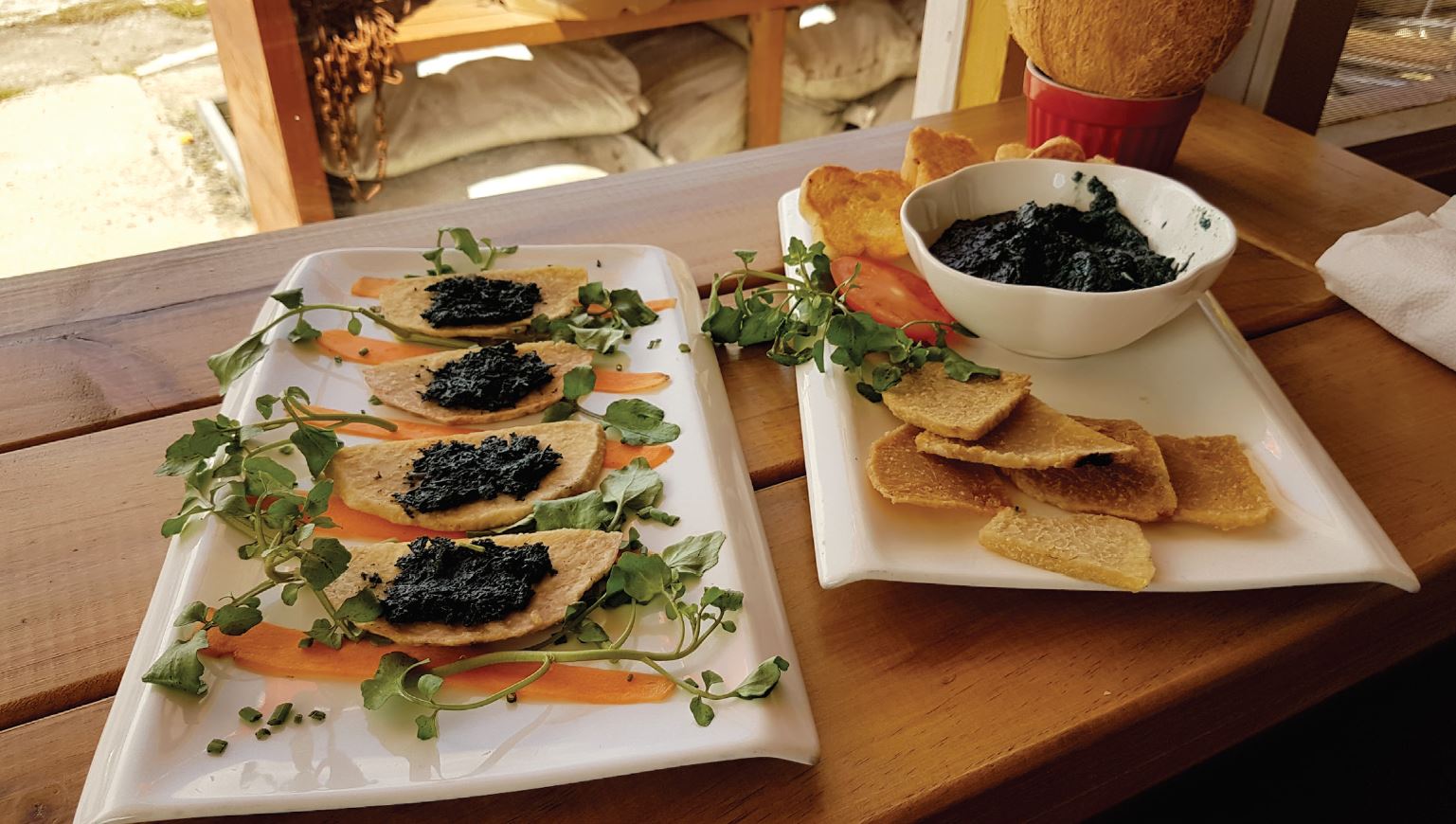Dine
Palolo – Caviar of the South Pacific
Early one October morning Liz Ah-Hi ventured into the dark waters of the Pacific to take part in a gastronomic ritual for the first time. She emerged a convert to sea worms.
February 7, 2020
Pacific Island Living
February 7, 2020If there is one annual event that is revered in the Samoan traditional calendar – it is the mysterious phenomena of palolo rising.
Palolo are annelid sea worms that inhabit tropical ocean waters and are a part of Samoan cuisine with the addition of tradition and mystique.
The way to pinpoint exactly when it spawns isn’t exactly a fine science but there is a small window of opportunity in the days following the first moon of every October.
Known as the caviar of the Pacific, it is Samoa’s most prized fish and also an acquired taste with its pungent flavours that many have likened to taking a big bite of the ocean.
From ocean to table, the harvesting of these annelid sea worms is as adventurous as those who dare to sample these delectable creatures, either raw or cooked as is the case in Samoa.
My palolo adventure started under a blanket of stars in the early hours of the morning in mid-October on the shores of Paradise Beach in Lefaga, Samoa.
Having never gone to ‘ka palolo’ (catch palolo ) I was more excited at the prospect of swimming in the sea at 3am under the moon rather than actually catching or eating palolo.
Dressing carefully for the event, I realised I was missing one important accessory when I looked around to see palolo hunters, wearing leis of fragrant mosooi (ylang ylang) and pua (frangipani) which is an ancient tradition that was apparently meant to ‘woo’ the palolo with their enchanting aroma and thus bring about an abundant catch.
Despite at least a hundred or so palolo hunters along the same stretch of beach, I quickly surmised the first rule of palolo hunting is ‘you never talk during palolo hunting’ having to make do with hand signals and whispers from my guide as I waded over the rocky shore and into the water.
Catching one’s first palolo worm is purely delightful until you realise you have about a thousand more to go as the delectable worms swarm in hoards (during a good season). One good way to figure out which spots along the beach the palolo are congregating is to watch where the groups of palolo hunters are gathering and with stealth and speed, head towards that direction.
Now there is a catch to all this palolo harvesting in the predawn hours which explained the urgency in everyone’s haste to harvest and store the slimy creatures.
Palolo as I found out, are nocturnal creatures and will dissipate when the sun has fully risen (Bram Stoker fans would thoroughly enjoy this) and to make matters even more complicated, they must be drained of the saltwater which would otherwise cause the precious worms to liquefy.
One of the great things about palolo harvesting is watching the sun rise and in Lefaga at Paradise Beach – this is guaranteed to be a spectacular sight for a place known for it’s stunning sunrises and sunsets and its no surprise that it was the location for the famous classic movie, Return to Paradise.
Following the harvesting of palolo, a hunting of a different sort ensued as locals and restaurateurs alike hit the grapevine and social media to see how much the palolo was selling for. Overseas Samoans were on the phones enquiring who of their families were lucky enough to catch the mystical worms and locals were scanning restaurant guides to see which eatery was serving up the seafood delicacy.

Having never eaten palolo before, and I certainly was not going to eat it raw as some palolo purists prefer, I headed straight to the Island Grill restaurant at Fugalei to sample their palolo tapas.
The little marine creatures resting on dainty slices of taro had transformed into a seafood dip the colour of midnight. Before I could entertain the memories of the wriggly worms from the night before, I took my first bite of palolo and … it was delicious. The stories are true, it is truly like taking a bite of the deep blue mysterious ocean encompassing all of the flavours of abalone, seaweed, oysters and something else I couldn’t quite pinpoint.
If your travels are in October, be sure to experience the once in a blue moon phenomena of palolo rising and end it on a unique note, savouring the Pacific’s own caviar cooked by the people who have been catching and serving up this seafood delicacy for centuries.
© 2024 Pacific Island Living Magazine all Rights Reserved
Website by Power Marketing